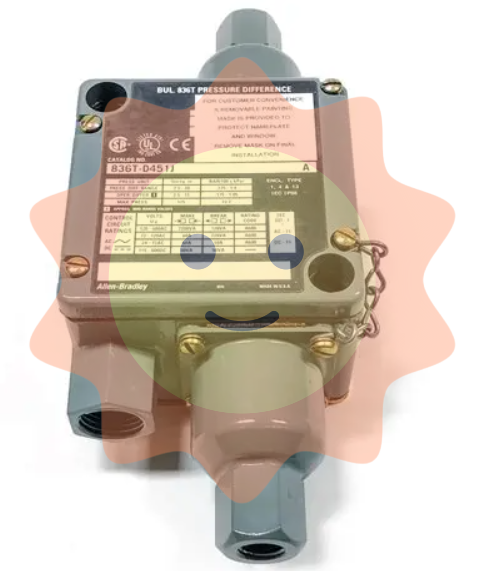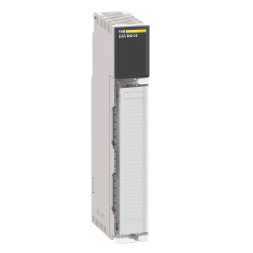ABB UNITOL 1005-0011 ECO 3BHE043576R0011 Automatic Voltage Regulator (AVR) is an efficient excitation control device specially designed by ABB for small and medium power synchronous generators. Based on the mature technology optimization design of the UNITOL series, it combines high reliability and economy. The device integrates precise voltage detection, intelligent regulation algorithms, and comprehensive protection logic. Its core function is to monitor the generator terminal voltage in real time, and dynamically adjust the excitation system output to ensure that the generator maintains voltage stability under no-load, load fluctuation, and grid disturbance conditions. At the same time, it supports reactive power optimization allocation and remote monitoring. It is widely used in diesel generators, gas generators, small hydropower/wind power and other fields, and is the core equipment to ensure the power quality of backup power systems and distributed power generation systems.
ABB UNITROL 1005-0011 ECO 3BHE043576R0011 Automatic Voltage Regulator
Product Overview
ABB UNITOL 1005-0011 ECO 3BHE043576R0011 Automatic Voltage Regulator (AVR) is an efficient excitation control device specially designed by ABB for small and medium power synchronous generators. Based on the mature technology optimization design of the UNITOL series, it combines high reliability and economy. The device integrates precise voltage detection, intelligent regulation algorithms, and comprehensive protection logic. Its core function is to monitor the generator terminal voltage in real time, and dynamically adjust the excitation system output to ensure that the generator maintains voltage stability under no-load, load fluctuation, and grid disturbance conditions. At the same time, it supports reactive power optimization allocation and remote monitoring. It is widely used in diesel generators, gas generators, small hydropower/wind power and other fields, and is the core equipment to ensure the power quality of backup power systems and distributed power generation systems.
Core functional characteristics
1. High precision voltage stability control
Using ABB's patented adaptive PID regulation algorithm, combined with a high-speed data acquisition module, it can capture subtle fluctuations in the generator terminal voltage in real time. By accurately adjusting the output of the excitation power unit, the voltage can be stabilized within the set value ± 0.2% range. In response to sudden load changes (such as motor start-up and impact load input), it has a fast response mechanism that can start and adjust within 5ms, effectively suppressing voltage drops or surges and ensuring the normal operation of electrical equipment. Support remote/local switching of voltage setpoint to meet different control requirements.
2. Flexible operating mode and reactive power optimization
It has multiple operating modes: constant voltage mode (default), constant excitation current mode (dedicated for excitation system debugging), and constant reactive power mode (during grid connected operation), which can be switched with one click through panel buttons or communication commands. During grid connected operation, it supports reactive power interaction with the power grid, and can achieve fixed power factor control (0.8 lag to 0.9 lead) through parameter settings, helping users optimize the distribution of reactive power in the power grid, reduce transmission losses, and meet the power sector's requirements for power factor.
3. Comprehensive security protection mechanism
Integrate multiple software and hardware protection functions, including overvoltage protection (to prevent generator overexcitation), undervoltage protection (to avoid demagnetization), overexcitation current protection (to protect excitation windings), excitation circuit fault protection (such as disconnection and short circuit), temperature protection, and power supply abnormal protection. When a fault is detected, the equipment immediately triggers corresponding protection actions (such as cutting off excitation output, starting alarm, locking operation), stores fault codes, and supports passive contact output of fault signals, facilitating linkage with external protection devices and minimizing the risk of equipment damage.
4. High cost-effectiveness and environmental adaptability
As an ECO economy product, we optimize hardware configuration while retaining core adjustment functions to reduce user investment costs, while continuing ABB's industrial grade quality standards. The core components have undergone rigorous screening, and the circuit adopts optoelectronic isolation and surge suppression design. It has passed EMC level 3 certification and can withstand harsh conditions such as electromagnetic interference and voltage fluctuations in industrial sites. The wide temperature working range (-20 ℃~65 ℃) and dust-proof and moisture-proof structure design can adapt to complex installation environments such as outdoor computer rooms and mobile power stations.
5. Convenient operation and maintenance management
Equipped with an intuitive LCD display panel, it can display key parameters such as generator voltage, excitation current, operating mode, and fault status in real time, and supports switching between Chinese/English interfaces. Voltage setting, mode switching, parameter configuration and other operations can be completed through panel buttons without the need for professional tools. Support remote monitoring through ABB dedicated debugging software or third-party SCADA systems to achieve functions such as parameter reading, fault diagnosis, firmware upgrade, etc., reducing on-site operation and maintenance workload. The device has a built-in parameter memory function, which ensures that parameters are not lost after power failure and can resume operation upon restart.
Applicable scenarios
-Backup power system: equipped with diesel generators and gas generators to ensure stable voltage during emergency power supply in key areas such as hospitals, data centers, and industrial plants
-Distributed generation: small hydropower stations, photovoltaic synchronous generators, and small wind power systems to enhance the stability and grid adaptability of renewable energy generation
-Industrial self owned power station: small and medium-sized factories provide excitation control for their own generators to meet the high requirements of production equipment for power quality and reduce dependence on the public power grid
-Mobile power station: mobile power generation equipment for engineering emergency rescue and field operations, adapted to harsh environments, ensuring reliable temporary power supply
-Ship power system: Main power generation system for inland ships and small sea vessels, ensuring stable operation of ship navigation and domestic electrical equipment
-Agricultural irrigation: Irrigation of farmland is carried out with a pump and a generator to maintain stable power supply voltage for the pump motor and improve irrigation efficiency
Precautions for use
1. Before installation, it is necessary to confirm that the equipment model matches the generator power and excitation system type. Strictly distinguish between strong current (generator voltage input, excitation control output) and weak current (power supply, communication) circuits according to the product manual to avoid wiring errors that may cause equipment to burn out.
2. The installation location should be chosen in a ventilated and dry place, away from high-temperature heat sources (such as generator exhaust pipes), oil stains, and corrosive gases, to ensure good heat dissipation of the equipment and an ambient temperature not exceeding 65 ℃.
3. Parameter initialization must be completed before the first operation, including key parameters such as the rated voltage, rated frequency, and excitation response coefficient of the generator. It is recommended to verify the voltage regulation accuracy through no-load testing and confirm that it is correct before connecting to the load.
4. Regularly check the panel display parameters during operation. If there are voltage fluctuations exceeding the standard or alarm indicator lights on, the machine should be stopped immediately, and the cause should be investigated through fault codes (such as loose wiring, excitation power unit faults, etc.), and then restarted after troubleshooting.
5. Daily maintenance requires regular cleaning of equipment surfaces and heat dissipation holes to remove dust, checking the tightness of wiring terminals, and quarterly parameter backup and system self diagnosis through debugging software to ensure effective protection functions.
When performing software upgrades or parameter modifications, the excitation control circuit should be disconnected first. After the upgrade is completed, a no-load test run should be conducted to confirm that the adjustment function is normal before putting it into grid connected operation.
When equipment malfunctions, it should be repaired by professionals with electrical equipment maintenance qualifications. Non professionals are prohibited from disassembling or modifying internal parameters without authorization. When repairing, the power supply of the equipment must be cut off first.
- User name Member Level Quantity Specification Purchase Date
- Satisfaction :
-









Email:wang@kongjiangauto.com




































































































































